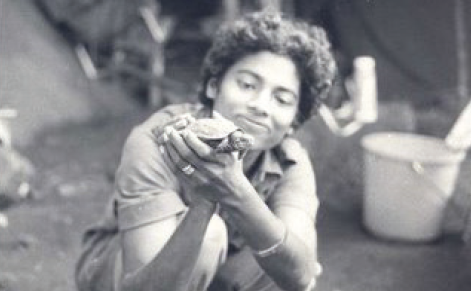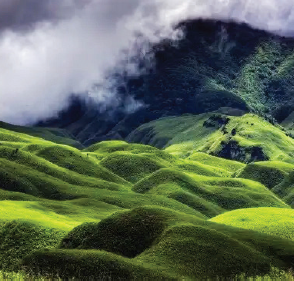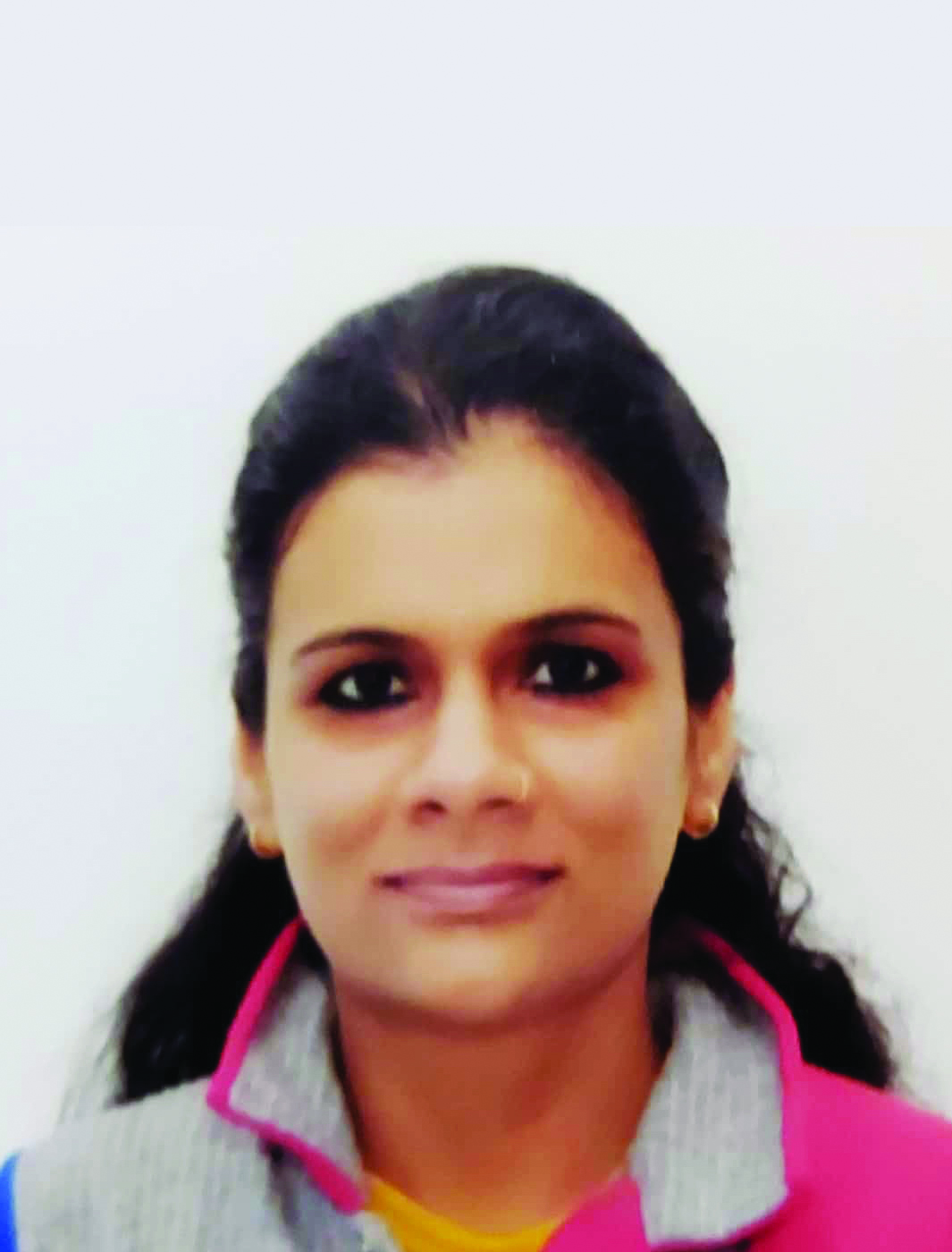Climate change is happening much faster than expected and could make many regions of the world uninhabitable in the coming decades, particularly affecting women and vulnerable communities. Women are underrepresented in environmental decision-making, despite their
essential role in natural resource management
By Samira Verma
- The invisibilisation of women and their efforts within the patriarchy is as much of a grim reality as environmental degradation
- Women’s participation needs to increase in green economies, more women leaders are required to build climate resilience strategies
- There are numerous female enviro-warriors who are quietly and without any fanfare spending their lives in making our earth a better place
- Sumaira Abdul Ali, Disha Ravi, Ridhima Pandey, Bano Haralu, Amla Ruia, J Vijaya, Vidya Athreya, Radha Bhatt are some of the examples
“Advancing gender equality, through reversing the various social and economic handicaps that make women voiceless and powerless, may also be one of the best ways of saving the environment.” —Amartya Sen, Nobel Laureate in Economics
Environmental degradation is the grim reality of the world that none of us can deny any longer. In this context, we are referring to environmental degradation to include everything from climate change and pollution to rising extinction rates of both flora and fauna, deforestation, contaminated air and water, increase in natural disasters, and unrestrained urbanisation.
The latest Intergovernmental Panel on Climate Change (IPCC) reports on adaptation and mitigation have stated that climate breakdown is happening at a much faster rate than anticipated and many regions of the planet may become uninhabitable in the next few decades. Most of these regions are to be found in the Asia and Pacific region and the worst affected are the women and other vulnerable communities.
While various noteworthy efforts to save the environment are being made by governments, NGOs, international organisations and individuals the world over, these efforts and initiatives are either actually dominated by men or the ones that are highlighted are the ones that are led by men. The invisibilisation of women and their efforts within the patriarchy is as much of a grim reality as environmental degradation, only it is also far older and more ubiquitous. The efforts by members of the LGBTQIA+ communities are relegated to the shadows even more but that would require a separate written piece.
Active Involvement
According to the World Bank, “Women play an essential role in the management of natural resources, including soil, water, forests and energy…and often have a profound traditional and contemporary knowledge of the natural world around them”. The logical extension of this would be to invest women with the knowledge, resources and opportunities to become equal partners with men to tackle the issue of environmental degradation. Unfortunately, we may still be aeons away from achieving this goal even though the UN itself (as noted in the 46th session of the Commission on Status of Women) recognises that the involvement of women in the protection of the environment would lead to building a sense of responsibility in society, which is essential for striking a balance between human beings and the limited resources of the earth. It is now increasingly being recognised that women’s participation needs to significantly increase in green economies, more numbers of women leaders are required to build climate resilience strategies at the community level and gender-responsive climate finance is the need of the hour.
The UN itself (as noted in the 46th session of the Commission on Status of Women) recognises that the involvement of women in the protection of the environment would lead to building a sense of responsibility in society, which is essential for striking a balance between human beings and the limited resources of the earth
It is 2023. But women across the globe still suffer the consequences of illiteracy/insufficient education, poverty and/or lack of access to resources, the gendered division of labour, lack of water, hygiene and sanitation (and their effects on women’s health, reproductive/maternal and otherwise), stereotypical norms and a severe lack of political commitment to ensuring gender equality. But despite these crippling odds, there are numerous unsung female environment warriors who are quietly and without any fanfare spending their lives in making our earth a better place to live. There are of course some female environmental activists who have managed to make their presence felt in the public eye, such as Maneka Gandhi, Medha Patkar, Vandana Shiva and Sunita Narain among others. However, this article attempts to highlight the work of women across a cross section of socio-economic circumstances and environmental domains whose crusade is just as tireless but whose names remain relatively unknown.

Young Activists
Sumaira Abdul Ali is the founder of ‘Awaaz Foundation’ and she has been dubbed the ‘Sound Minister of India’ because of her tireless efforts to combat noise pollution. Noise pollution, which was once not even considered as an environmental or health hazard, is now seen as one of the most dangerous consequences of rapid urbanisation. Sumaira Ali’s NGO works on many different kinds of noise pollution including traffic noise, railway noise, construction noise, urban helipads, loudspeaker and festival noise as well as sand mining. She has led the anti-noise pollution campaign in India since 2002 and the anti-sand mining campaign since 2004, for which she was even attacked by the sand mafia.
“It’s not a matter of just fighting for our future, it’s also worth fighting for our present. We’re experiencing the climate crisis every day.” Said Disha Ravi. Disha is a young 22 year old activist, co-founded the Fridays For Future (FFF) movement in India, which works towards organising peaceful demonstrations, campaigns, seminars and conferences to talk about and raise awareness for climate change and ecological breakdown. They organise these events mostly in schools and colleges as Ravi believes that the youth are the ones who are going to be most affected by climate change in the coming years.
Some of the major campaigns organised by Disha Ravi and the FFF include the protection of the Mollem forest area in Goa, an elephant conservation zone in Uttarakhand, Aarey forest in Mumbai, Raika forest in Jammu and the Dumna nature park in Madhya Pradesh. For their efforts however, FFF’s website was taken down by the police and Ravi was sent to police custody for alleged links with Khalistan sympathisers abroad. This was because FFF at that time had organised an email campaign against the draft Environmental Impact Assessment notification formulated by the environment ministry, as the notification had proposed a reduction in public consultation on projects and granting post-facto environmental clearance.
Even younger than Disha is the 13 year old Ridhima Pandey, who was one of the 16 children who filed a complaint in the United Nations Committee on the Rights of the Child, against those countries that were not taking action against climate change. When she was only 9 years old she wrote a plea to the National Green Tribunal with her father’s help, which said, “I urge the government to prepare a carbon budget and create a national climate recovery plan.” Her plea was rejected. Now, she spends her time teaching her friends, classmates and other school students about climate change and campaigns to curb the consumption of plastic.
Safeguarding Conservation
The state of Nagaland has been awarded the title of ‘Falcon Capital of the World’. But little do people know that this has come about due to the efforts of a woman by the name of Bano Haralu, who led a movement to protect the Amur falcon from indiscriminate and large-scale hunting. She later also launched the ‘Friends of the Amur Falcon’ campaign which she uses to provide conservation education to schools and local communities. Another such unsung hero is Amla Ruia, who has been instrumental in bringing water security to 100 villages of Rajasthan by reviving traditional rainwater-harvesting techniques and building check dams. Many other villages have become water independent thanks to her and her efforts towards improving ground water tables and reviving hand pumps and borewells that had run dry in the state. She also founded the ‘Aakar Charitable Trust’ which works to protect natural resources such as water, vegetation and soil.
J Vijaya, one of the rare female herpetologists in the field of reptile conservation, which is mostly dominated by men, was the first to tackle the issue of the hunting and trade of Olive Ridley Turtles in West Bengal. Her landmark study of the Cochin forest cane turtle earned her the distinction of having the entire genus renamed Vijayachelys Silvatica in her honour
A herpetologist is someone who specialises in the study of reptiles and amphibians. J Vijaya, one of the rare female herpetologists in the field of reptile conservation, which is mostly dominated by men, was the first to tackle the issue of the hunting and trade of Olive Ridley Turtles in West Bengal. In the 1980s, she conducted extensive field work, instituted a national turtle survey and sent her findings to the then Prime Minister Indira Gandhi, who green-lighted measures for the protection of these turtles. Vijaya’s landmark study of the Cochin forest cane turtle earned her the distinction of having the entire genus renamed Vijayachelys Silvatica in her honour.

Working for the conservation of animals is also Vidya Athreya, who is an ecologist specialising in human-leopard conflict. Rapid and unheeded urbanisation has led to humans encroaching upon and endangering the territories inhabited by wild animals, leading to frequent conflicts between them. Athreya thus works with the Forest Department in Maharashtra to contain such conflicts and also organises efforts to raise awareness about the conservation of the big cats.
Radha Bhatt or Radha Behen, as she is fondly called, led the Uttarakhand Nadi Bachao Abhiyan in 2008 to oppose the construction of a series of hydel power projects that threatened the flow of the Ganga and its tributaries and further added to the deforestation of the state. As part of her campaign she led other women activists on a 2000 kilometre march to demand for a people-oriented water policy that would protect the land, forests and water of Uttarakhand as well as the lives and livelihoods of its people. Radha Behen continues to work for ensuring people’s water rights in Uttarakhand.
Kinkri Devi, a woman who never received any formal education and who belongs to a low-income family (her father was a subsistence farmer and she herself worked as a domestic worker) was at the forefront of opposing limestone extraction in the Sirmaur district of Himachal Pradesh. The large-scale mining and quarrying of limestone was leading to the contamination of water sources, the degradation of agricultural land and deforestation in the district. Having observed these adverse effects of what was otherwise a major industry, Kinkri Devi started by raising awareness about the issue and ultimately filed a petition against 48 mine owners in the Shimla High Court with the help of an NGO called People’s Action for People in Need. When she received no response to her PIL, she went on a 19 day hunger strike in front of the court. She finally won her battle when the High Court ordered a complete prohibition on mining and a moratorium on hill blasting.

The state of Nagaland has been awarded the title of ‘Falcon Capital of the World’. But little do people know that this has come about due to the efforts of a woman by the name of Bano Haralu, who led a movement to protect the Amur falcon from indiscriminate and large-scale hunting
Rahibai Popere, 56, from Kombhalne village in Maharashtra has spent years fighting to preserve biodiversity in Indian crops, conserving India’s fast disappearing native seeds. “I started my journey to conserve and save indigenous seeds 25 years ago when my children started becoming very sick after eating market-bought vegetables grown from hybrid seeds. The vegetables were full of pesticides and chemicals too, which weren’t good for human consumption.” said Rahibai. She has nurtured 43 acres of farmland and cultivated 17 indigenous crops, distributing free seeds to encourage farmers to expand crop diversity. Today she has a seed bank in her small mud house for the conservation and revival of crop diversity.
An article on women’s contributions would be incomplete without at least one example of the patriarchy fatally punishing an outspoken woman. Shehla Masood’s is one such tragic tale; undoubtedly from amongst countless others. Masood was shot at point-blank range outside her own home because she had been investigating and speaking out against illegal diamond mining and hunting of tigers. She had mostly been investigating the deaths of tigers in Madhya Pradesh’s sanctuaries such as Kanha. For her contributions, the ‘Crusade Against Corruption’ award was posthumously bestowed upon her. Nevertheless, her name and efforts have languished ignominiously in darkness. The question to be asked here is that, does a posthumous award given to a woman assassinated for her courage and relentlessness help anyone? It doesn’t help the planet and it certainly does not do anything for the moral compass of humanity and the systematic subjugation of women.
The urgent need of the hour therefore, which actually should not have to be discussed and talked about incessantly, is firstly, to create more opportunities for women leaders to enter the environmental domain and to acknowledge the contributions of those women who are already working (sometimes single-handedly) for the planet. Women are much better suited to conflict resolution, and better outcomes in terms of transparency and compliance and observation of rules are seen under their leadership.
Moreover, it is a common sensical fact that women are naturally involved in conservation and the management of natural resources and the ecology as they have much closer ties to natural resources such as land, water and wildlife. Even if we were to simply observe the traditional gender roles in our own households, we would realise, much like I did, that it is my mother who manages the food, the water, the plants and the domestic animals. But if these contributions of our own mothers, without which everyday life would not even be possible, are overlooked in favour of the male ‘breadwinner’, what hope do we have for recognising and appreciating the contributions of women in the public domain? Maybe the residents of this planet would do better to realise that we have reached the current state of climate catastrophe or “code red for humanity” (as the UN Secretary-General António Guterres has called it) after centuries of uninterrupted patriarchy.
